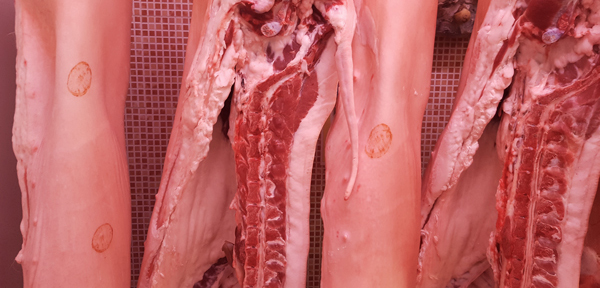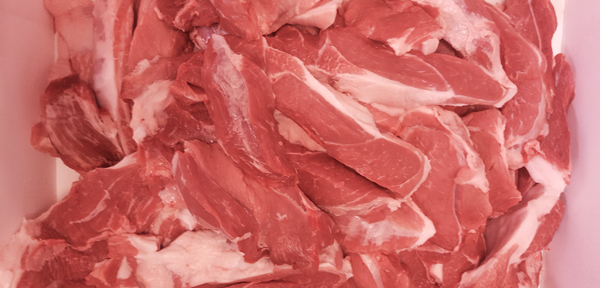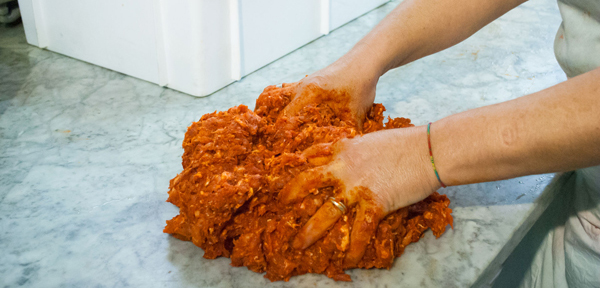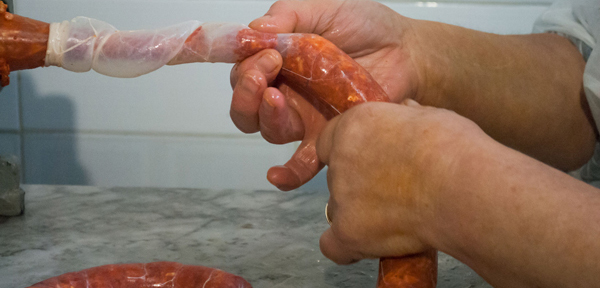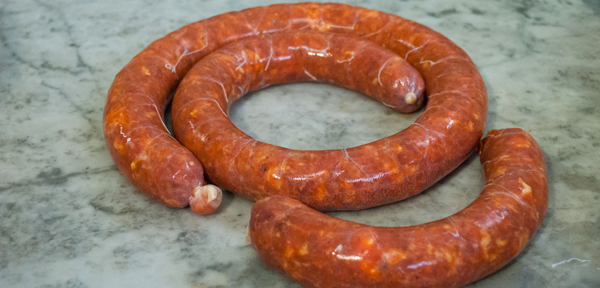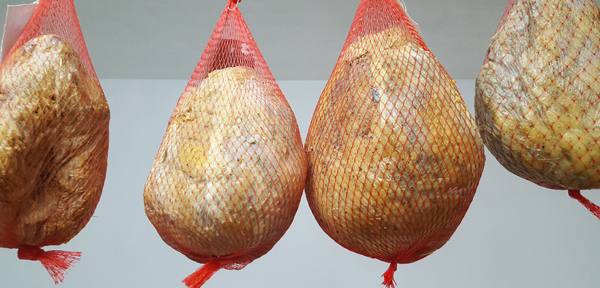Our manufacturing process
According to ancient Lucanian traditions.
The 'goal is to bring to market the same product that was created more than 60 years ago. Family know-how allows us to do this. Our question every day is: How do we create the perfect sausage?
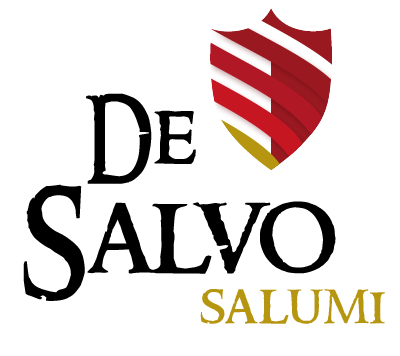
Our care starts from pig birth until slaughter. We make sure the animals are fed the right and above all natural feeds. We use only meat from Lucanian farms, raised according to the rules of our supply chain. Every step up to the final product is not left to chance, we try to combine old traditions with modern production rules and systems.
The difficulties in producing a 100% natural product are many and the risks high. By not using any chemicals for preservation or coloring, and other chemicals that alter the naturalness of our cured meats, care in the various production steps must be maximal and continuous. Only in this way can a genuine and natural cured meat be created.
The various production steps

Slaughter
Animals are transported to a licensed establishment under continuous supervision to ensure suitability and hygiene requirements.

Sectioning
Once slaughtered, the pigs arrive at our plant where they are cut up for the different types of sausage. "Selecting only the best pieces!"

Processing
The meats will be processed in a workshop in the Lucanian tradition. The meats will be spiced and salted naturally, according to our valuable recipes.

Seasoning
Once tied, they will be hung in our halls, alternating between aging with and without cells. Subject to genuine slow drying.

Finished product
After curing, which will vary depending on the cured meat, the products are vacuum-preserved without the addition of any "preservatives," ready to be enjoyed.
Seasoning room
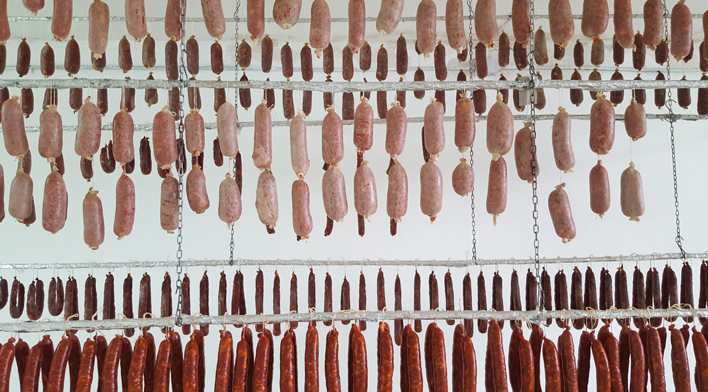
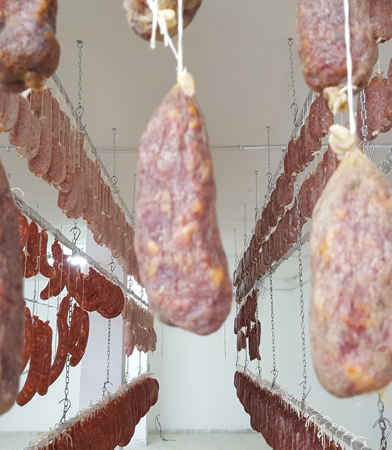
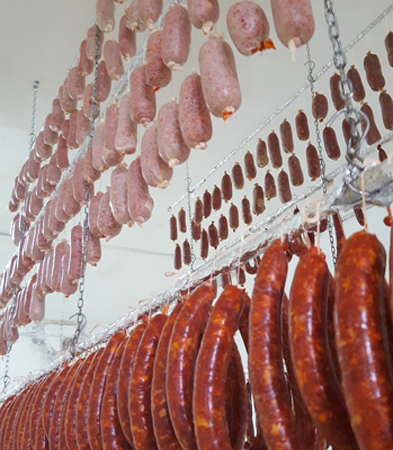
The manufacturing process
For greater transparency, we want to show the processes in a time line, describing step by step the individual steps in creating the sausage.
Grinding
Once sectioned, as for sausages (sausage, brawn), the meat is ground through a simple machine that does not affect the quality of the meat.
Spicing
Ground meat is spiced, with 100% organic spices, according to our traditional recipes and with secret dosages handed down from generation to generation.
Dough
The meat and spices are carefully mixed together for the sausage sausages. Whole ones, such as capocollo, are coated and blended with spices.
Bagging
The ready-made dough is fed into a 'pedal bagging machine, so the casing is stuffed with strictly natural intestines!
Binding
Once filled, the sausage is sectioned and then hand-tied. Whole sausages are provided with ties so they can be hung.
Drying
The finished cured meat, still fresh, will be hung in a special room for curing by alternating curing with and without cells.
Conservation
Once the curing period, which varies depending on the cured meat, is over, the products are sectioned and then stored in special vacuum bags.
